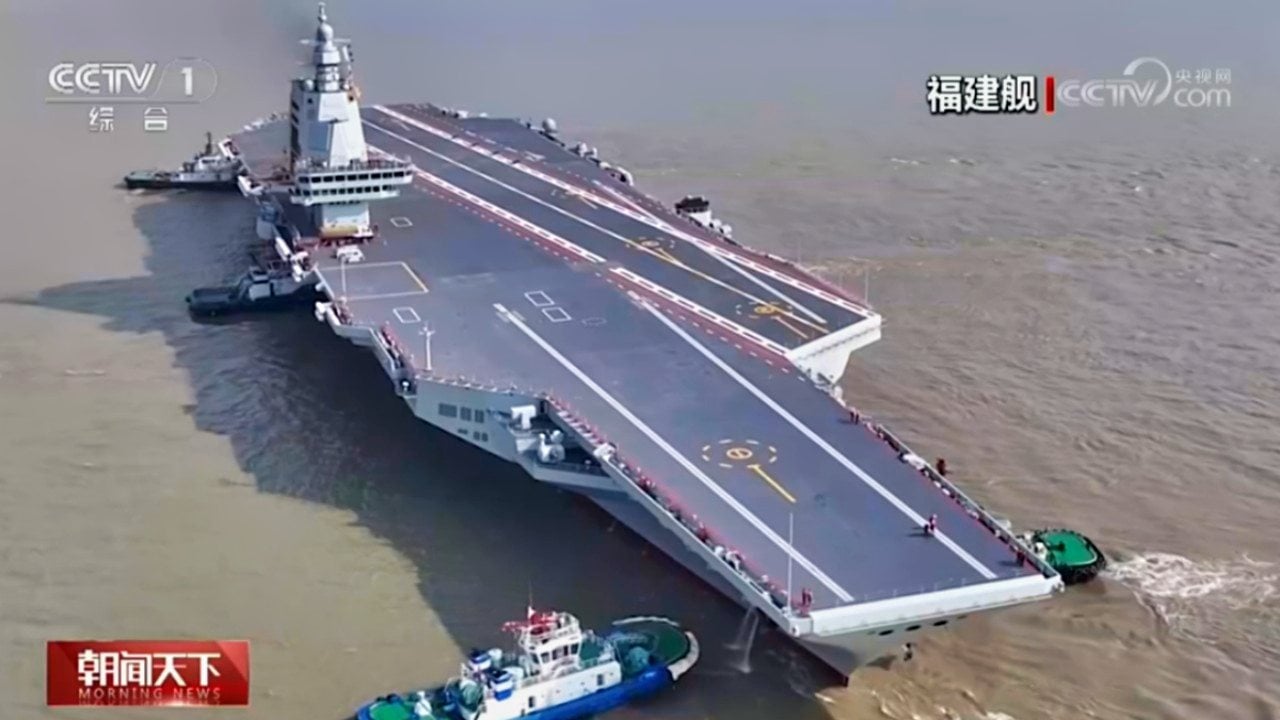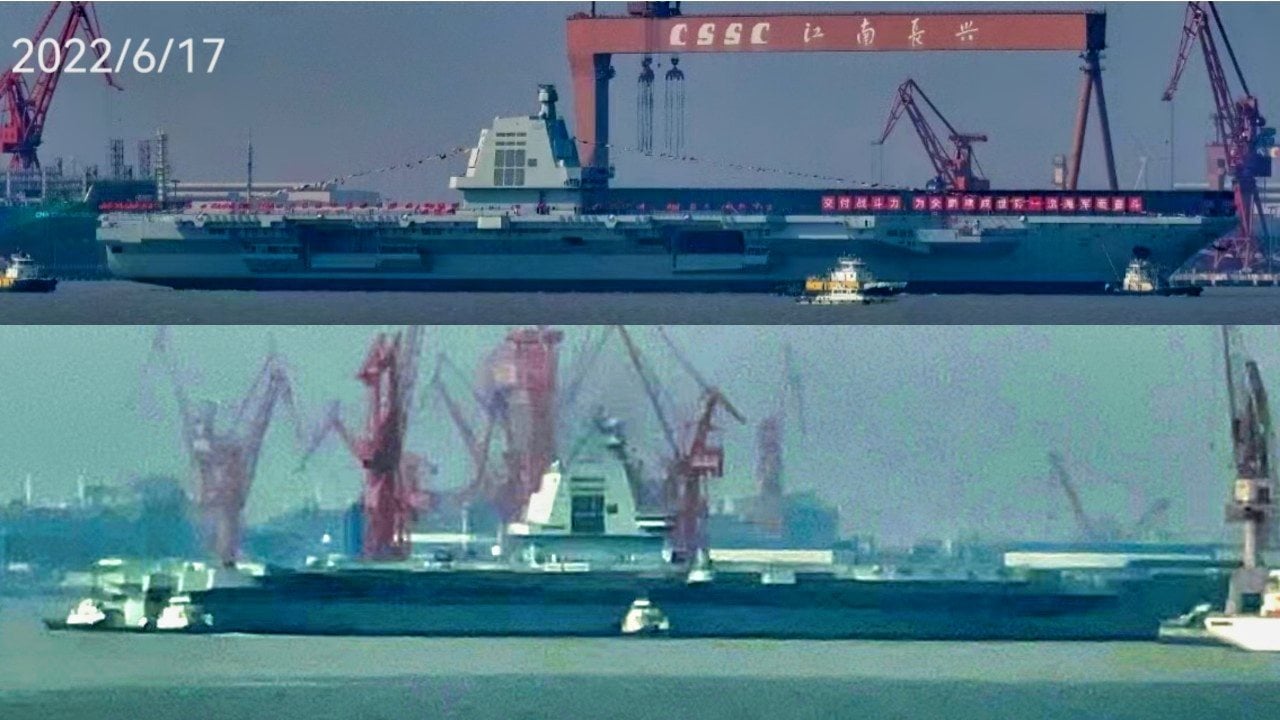Summary and Key Points: China’s investment in aircraft carriers has advanced quickly, positioning the People’s Liberation Army Navy (PLAN) as a potential regional power. Despite progress, significant challenges remain, including limited operational experience, the need for integrated battle groups, and insufficient global logistics support.

-While the carriers may not yet match U.S. capabilities, they serve as powerful propaganda tools and enhance China’s influence in the region.
-The future of China’s carrier program depends on its geopolitical and economic stability, making the carriers a double-edged sword for Beijing’s military ambitions.
China’s Aircraft Carriers, Bad Idea?
Aircraft carriers are a longstanding measure of a strong navy and a nation’s ability to project power. Though new to the carrier game, China’s carrier development and operations have advanced quickly in the last decade. Analysts are somewhat baffled. Many agree that the People’s Liberation Army Navy (PLAN) is a long way from having a competent carrier force capable of combat – so what is driving Beijing’s investment?
An Overview of Beijing’s Carrier History
The Communist Party of China’s regime has a history of overlooking its navy. In the 1970s, the PLAN had no intention of building a carrier, or at least that is what officials would tell foreign visitors: “China will never build an aircraft carrier. Aircraft carriers are tools of imperialism, and they’re like sitting ducks waiting to be shot.”
Even then, however, some did have a vision for carriers. Admiral Liu Huaqing, widely considered the father of the modern PLAN, envisioned a gradual process whereby the development of a greenwater fleet strong enough to protect Chinese coastal waters would be followed by a pivot to a bluewater fleet.
This idea was reinforced in the 21st century as part of President Xi Jinping’s vision of fully modernizing the Chinese military by 2027 and developing a world-class military by 2049. China’s first foray into carrier development came with the purchase of HMAS Melbourne for scrap from Australia in 1985. While the ship had been stripped before Australia turned it over, her flight deck, arresting gear, and catapults were left intact. The Chinese learned a lot from this vessel, even removing the flight deck and placing it on land for pilot practice.
In 1998, much greater progress was made with the purchase of Varyag from Ukraine. This vessel was renamed the Type 001 Liaoning and fully refitted for functional carrier operations. She became operational in 2016. China has rapidly advanced its carrier-building activities in the years since. The Type 002 Shandong, an indigenous design based on Liaoning, was launched in 2017. Construction of the Type 003 Fujian began in that year as well.

Fujian, launched in 2022, is a big step forward from its predecessors. Instead of a ski jump, it features an electromagnetic launch system very similar to the EMALS found on the U.S. Navy’s brand new Ford class. Construction is underway on the Type 004, which will be China’s first nuclear-powered carrier and is reported to have capabilities similar to U.S. supercarriers.
The Path to Full Carrier Capability
The PLAN is still very new to carrier operations. It lacks the institutional knowledge and training to properly use them. At the tactical level, the PLAN still rarely conducts flight operations at night or in rough weather. They also struggle to generate sortie rates similar to their U.S. counterparts. Flight operations are the most complex task a carrier faces and require seamless coordination from multiple parts of the airwing and ship crew. Decades of experience here have to be earned, and a knowledge of theory is no replacement.
Looking past the individual carrier, these vessels never operate alone. They are escorted by several warships, each capable in its own right. In particular, the other vessels are responsible for anti-submarine warfare. The PLAN has not yet been observed integrating its carriers into full battle groups, and this is an essential part of bluewater carrier operations.
Finally, even nuclear-powered carriers require resupply for their crews and aircraft, and having established bases and logistics hubs across the globe is part of what allows the U.S. Navy to send its carriers wherever and whenever they are needed. While China has been investing in bases in the region, they do not yet have the reach needed to support their carriers in any ocean.
Apparent Use of Carrier Force
So what can China do with its carriers in the coming decades? It is unlikely the carriers would participate in any conflict with Taiwan – far more capable land-based fighter aircraft can easily make the journey to Taiwanese airspace. Additionally, they are clearly unable to face a U.S. carrier strike group outside the protective umbrella of their own shore-based missile systems.
The carriers’ primary use may likely be as tools for propaganda. Being able to field a carrier, even if it’s not up to the standards of its rivals, is a massive accomplishment in its own right and can serve as a powerful diplomatic tool. If Chinese carriers remain unchallenged, they would certainly be able to project power in their immediate region against nations like Japan, South Korea, and the Philippines.
It is impossible to tell yet whether this investment will pay off for the CCP. If China’s rise is unchecked, these carriers could be a crucial part of military operations to support Chinese hegemony. But if China suffers a major setback – something like a major economic crisis or embarrassing failure to capture Taiwan – they could be quickly forgotten.
About the Author: Maya Carlin, Defense Expert
Maya Carlin, National Security Writer with The National Interest, is an analyst with the Center for Security Policy and a former Anna Sobol Levy Fellow at IDC Herzliya in Israel. She has by-lines in many publications, including The National Interest, Jerusalem Post, and Times of Israel. You can follow her on Twitter: @MayaCarlin.
All images are Creative Commons.


